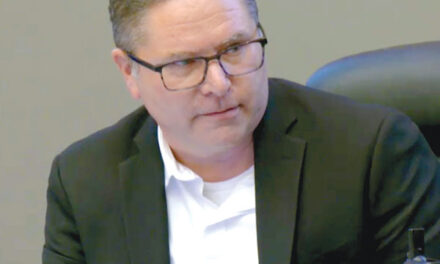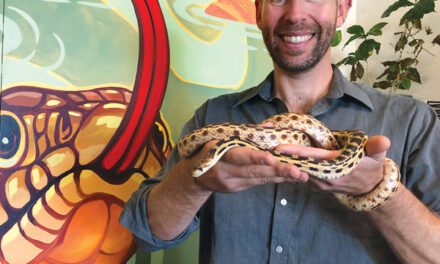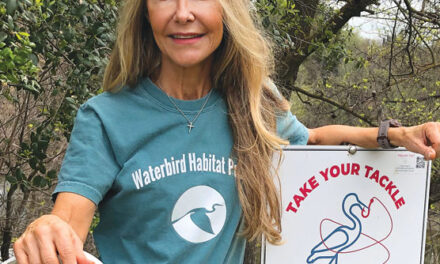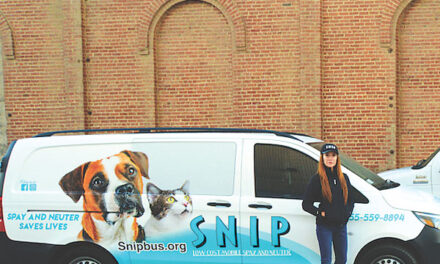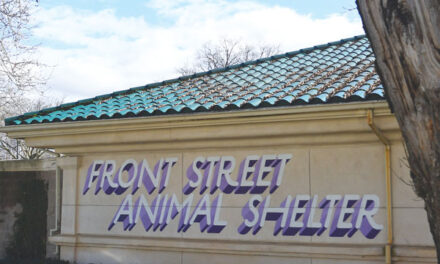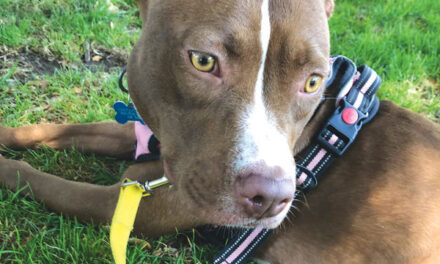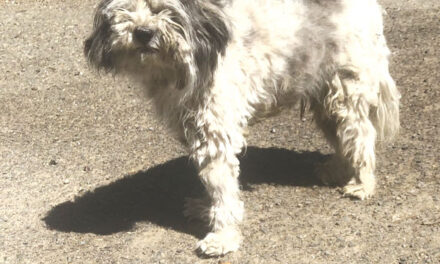UPDATE
Sacramento Regional Transit reports that temporary “safety netting” has been added to the structure at the Franklin Light Rail Station to prevent birds from entering, becoming trapped and dying. The artist, David Best, is scheduled to make permanent changes in February.
The call came into the Wildlife Care Association in early September. A great horned owl was caught in a metal art structure at the Franklin Light Rail Station near Consumnes River College. The large bird of prey had been trapped for at least 24 hours.
Chris Lay, a Wildlife Care volunteer with eight years of experience, was first to respond. “He was alive, but there was no way to get him out,” she says.
The artwork, created by Petaluma sculptor David Best, is a towering archway fabricated from 1-inch-thick rusted steel. The structure stands approximately 20 feet tall and straddles the main walkway to the station platform.
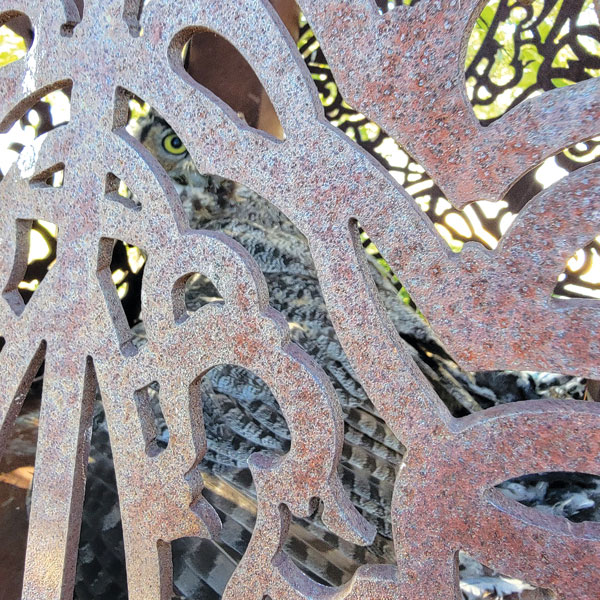
Intricately cut decorative scrolls weave from the bottom up and leave wide openings at the top. Easy for birds to enter. Impossible to exit.
“Birds can’t fly straight up,” Lay says. “By the time they get to the bottom of the structure, they’re going to be whacking their wings and knocking themselves out. They’re stuck.”
Numerous other birds, including pigeons, were also found dead, one on top of the other. With no escape, they died by injury, starvation, dehydration.
“The birds are there long enough that they decompose,” Lay says. “They are covered in ants. It’s nasty.”
Lay called wildlife rescuer Ben Nuckolls. With no means of reaching the owl, Lay called 911. Within 10 minutes, the Sacramento Fire Department was on the scene, cutting through the steel bars and bending the metal back so Nuckolls could extract the bird.
The great horned owl was malnourished with a broken wing and injuries to his legs—too severe to treat. He was euthanized. “He could have broken his wing coming down flapping and then trying to get out,” Lay says. The bird of prey may have been chasing a pigeon into the artwork.
The archway was installed in 2015 as a joint project between Regional Transit and the Metropolitan Arts Commission’s Art in Public Places program. According to SacRT, the artwork is intended to enhance the aesthetics of the light rail station. It’s unfortunate that pigeons also perch at the top of the structure and blanket the walkway below with excrement.
David Best erected two similar structures, one for Petaluma’s public arts program, another for a winery in Santa Rosa. Both have archways, intricate scroll work and wide openings.
“To my knowledge this was the first time we were notified about an issue with this sculpture,” says Devra Selenis, SacRT vice president of communications.
The legs of the arch are about 20 feet apart, approximately 6 feet on each side from the walkway. “It’s not someplace somebody would look unless they were just standing there and heard the noise,” Lay says. “They might not even hear the noise with trains coming and going.”
An easy fix would be to stretch wire mesh across the top of the structure. Yet, SacRT has been slow to respond. Almost four months after Wildlife Care reported the problem, modifications to the structure were still not made.
“There are steps we must take before any final modifications can take place,” Selenis says. “Since it’s commissioned artwork and publicly funded through an arts in public spaces program, SacRT can’t just modify the structure without working with the artist first.”
Best met with SacRT on Nov. 14—63 days after Wildlife Care notified Regional Transit of the entrapment problem. “The artist does not live in Sacramento, so it took a little time to meet with him on site,” Selenis says.
Inside Sacramento reached out to Best for comment. The board president of the artist’s nonprofit foundation responded, “Don’t hold your breath.”
According to Selenis, “The artist and his team are actively working on a solution/proposal.”
In the meantime, more birds are dying. Subsequent visits to the light rail station by Wildlife Care volunteers found more birds—including a kestrel, a small bird of prey—dead at the bottom of the arch.
“The way it is now, there’s always going to be dead birds in there,” Lay says. “They should have been out there to fix it a long time ago.”
Cathryn Rakich can be reached at crakich@surewest.net. Follow us on Facebook and Instagram: @insidesacramento.



